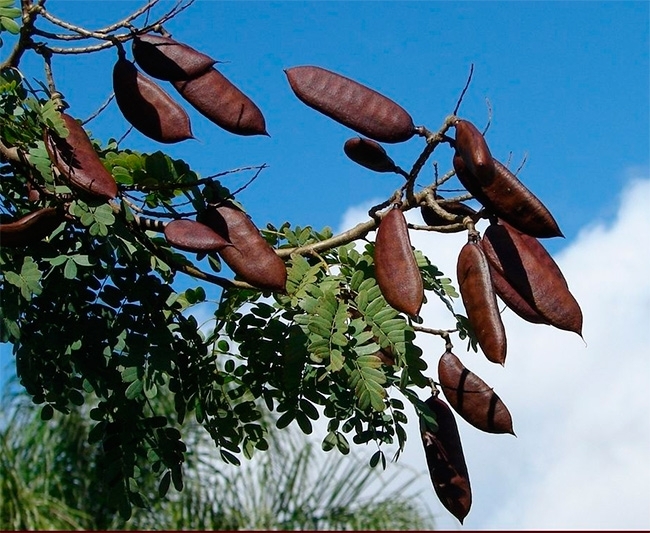

Researchers in the Brazilian states of São Paulo, Amazonas and Pará have demonstrated that extracts from this native plant are rich in gallic acid, which inhibits the action of enzymes that degrade collagen and contribute to skin aging (photo: Wikimedia)
Researchers in the Brazilian states of São Paulo, Amazonas and Pará have demonstrated that extracts from this native plant are rich in gallic acid, which inhibits the action of enzymes that degrade collagen.
Researchers in the Brazilian states of São Paulo, Amazonas and Pará have demonstrated that extracts from this native plant are rich in gallic acid, which inhibits the action of enzymes that degrade collagen.

Researchers in the Brazilian states of São Paulo, Amazonas and Pará have demonstrated that extracts from this native plant are rich in gallic acid, which inhibits the action of enzymes that degrade collagen and contribute to skin aging (photo: Wikimedia)
By Peter Moon | Agência FAPESP – The Brazilian ironwood or leopard tree (Libidibia ferrea), a native of the Amazon, is small in size but has considerable therapeutic potential. Infusions made from its stem bark and leaves are recommended by the region’s apothecaries for treatment of liver and stomach problems. Its bark extract is industrialized and used as an ingredient in various kinds of antibacterial soap.
A pioneering study published in 2014 by Emerson Silva Lima, a professor at the Federal University of Amazonas (UFAM) in Brazil, showed that the bark and pod contain antioxidants and can be used to treat liver disorders.
Researchers have now added to the many properties of L. ferrea. According to an article published in Archives of Dermatological Research, it is an effective anti-aging and anti-pigmentation agent.
The new study was performed by Lima and 13 other researchers affiliated with the University of São Paulo (USP), Amazonas State University (UEA), the Federal University of São Paulo (UNIFESP) and the Federal University of Pará (UFPA), as well as Lima’s own institution, UFAM.
According to one of the authors, Silvya Stuchi Maria-Engler, a professor at USP’s School of Pharmaceutical Sciences, the main motivation for the study was the “lack of information about the anti-aging agents in the composition of L. ferrea extract”.
According to lead author Tatiana do Nascimento Pedrosa, a PhD student supervised by Maria-Engler and supported by a scholarship from FAPESP, investigation of the plant’s cosmetic potential brought to light its strong whitening and anti-aging activity. “The in vitro results were excellent,” she said.
When the researchers analyzed the effects of L. ferrea extract on human cells grown in the lab, they noted the importance of gallic acid. “In the article, we describe how we identified 18 metabolic agents in this plant,” Pedrosa said. “And in the literature, we verified that gallic acid has the strongest antioxidant activity of any of them.”
Gallic acid inhibits the action of enzymes such as tyrosinase, elastase and collagenase, which degrade the skin matrix and eventually cause discoloration and other aspects of aging.
Skin aging is a consequence of the antioxidant defense system’s progressive inability to slow the harmful effects of tissue oxidation, leading to loss of elasticity, flaccidity, wrinkles and blemishes.
Environmental pollution, overexposure to sunlight and habits such as smoking accelerate the process by stimulating the production of skin enzymes such as elastase and collagenase, which degrade elastin and collagen, key components of the skin matrix.
The L. ferrea extracts were also found to contain epicatechin and catechin, polyphenols that are known to be tyrosinase inhibitors.
The researchers found the bark and pod extracts to be safe and effective both to combat whitening and as depigmenting agents. “L. ferrea has significant potential and can be used in anti-aging creams,” Maria-Engler said.
L. ferrea is native to Brazil, where it is found all over the North and Northeast regions. The samples used in the study were supplied by the National Institute of Amazon Research (INPA) and were identified in its herbarium.
Patent
One of the priorities of the cosmetics industry is the discovery or development of new antioxidants. The advantage of using natural products is their efficacy and safety compared with synthetic antioxidants.
No applications have yet been filed to patent the antioxidant compounds found in L. ferrea because the active ingredients responsible for the new therapy must first be isolated. “That’s the next step in our research,” Pedrosa said. “Only once we’ve isolated the active ingredients can we apply for a patent.”
The research was conducted at Maria-Engler’s laboratory, which specializes in growing artificial skin. “FAPESP provided 90% of the funding for the lab, including the liquid chromatography and mass spectrometry systems used in this study,” Maria-Engler said.
The study was also supported by the Brazilian Ministry of Education’s Office for Faculty Development (CAPES) via the National Academic Cooperation Program.
The article “Anti-wrinkle and anti-whitening effects of jucá (Libidibia ferrea Mart.) extracts” (doi: 10.1007/s00403-016-1685-0), published in Archives of Dermatological Research (308 (9): 643-654), can be retrieved from link.springer.com/article/10.1007/s00403-016-1685-0.
Republish
The Agency FAPESP licenses news via Creative Commons (CC-BY-NC-ND) so that they can be republished free of charge and in a simple way by other digital or printed vehicles. Agência FAPESP must be credited as the source of the content being republished and the name of the reporter (if any) must be attributed. Using the HMTL button below allows compliance with these rules, detailed in Digital Republishing Policy FAPESP.




